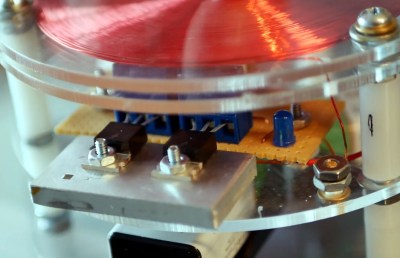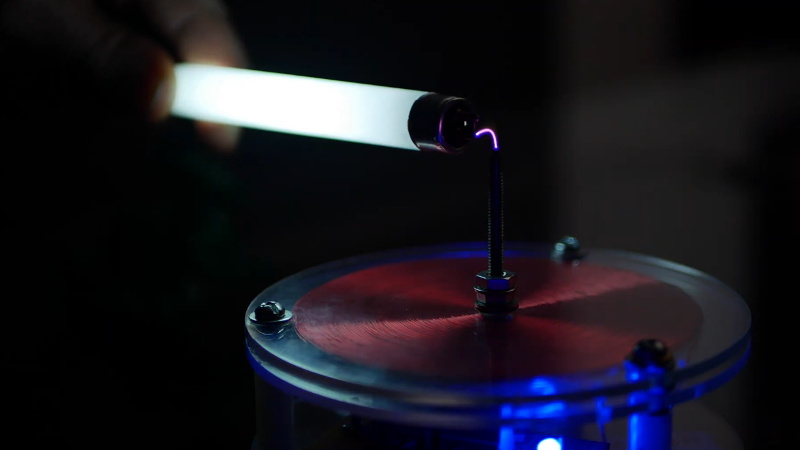Tesla coils are incredible pieces of hardware, but they can be tricky to build. Between the spark gap, capacitors, and finely tuned coils, it’s not exactly a beginners project. Luckily, there’s hope for anyone looking for a less complex way to shoot some sparks: the Slayer Exciter. This device can be thought of as the little cousin to the Tesla coil, and can be used for many of the same high voltage experiments while being far easier to assemble.
Now [Jay Bowles] is obviously no stranger to building his own Tesla coils, but since so many of his fans wanted to see his take on this less complex option, he recently built his own Slayer Exciter. After putting on a few of his own unique touches, the end result looks very promising. It might not be able to throw sparks as far as some of the other creations featured on his YouTube channel, but it’s still impressive for something so simple.

In the video, [Jay] does a great job explaining and illustrating how this basic circuit creates exceptionally high frequency energy. In fact, the frequency is so high that the human ear can’t hear it; unfortunate news for fans of the Tesla coil’s characteristic buzz.
Generally speaking Slayer Exciters would have the same sort of vertical coils that you’d see used on a traditional Tesla coil, but in this case, [Jay] has swapped that out for a pancake coil held in the upper level of the device. This makes for a very compact unit that would be perfect for your desk, if it wasn’t for the fact that the arcs produced by this gadget are hot enough to instantly vaporize human skin. Just something to keep in mind.
We’ve seen Slayer builds in the past, but none as well designed as this one. Incidentally, if you’re wondering about the array of neon indicator lights that [Jay] uses to visualize the electrical field, we covered that project as well.
















Been reading this through all day and I still don’t get why Buffy is gonna be so thrilled about it.
Because she’s a vapire /slayer/?
Because vampires are Hot
OK, maybe I’m missing something…where’s the link to how to build this project?
I gonna stick with old design (pvc pipe and hundreds of turns) cause it looks waaaay cooler
Nice work and nice video, but no explanation of construction details, no schematics…… Unfortunately useless for somebody who wants to build someting similar. Would be very helpful to get some details.
Sorry, can’t believe this works like shown in the video (especially the powerful hot arcs, copper melting and the lightbulb plasma ball) with 9 V batteries…. 9 V batteries are build for low-power applications in the milli-Ampere range, and are not able to drive such high-power devices like a slayer exciter. Or, if at all, for just a few seconds only.
They are rechargeable batteries, so they are either NIMH or Li-ion. Both can handle quite a bit of current.